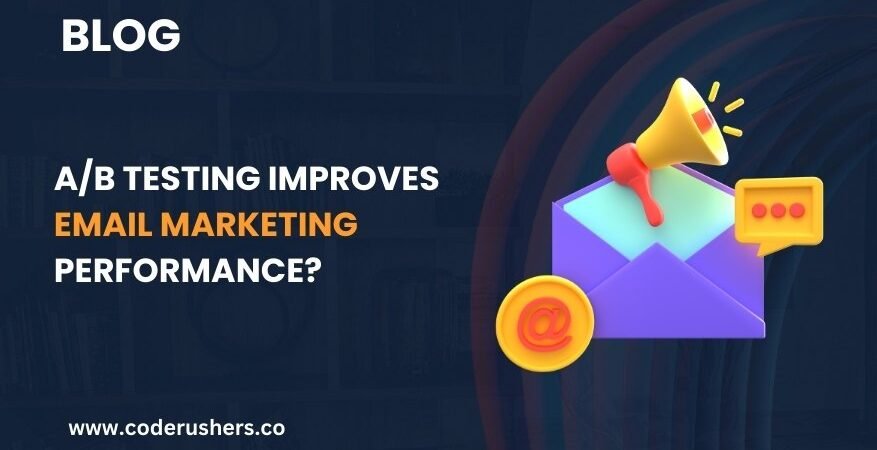
How Can A/B Testing Improve Email Marketing Performance?
Ever feel like your email marketing campaigns are more hit-or-miss than you’d like? One week, you’re celebrating a record-breaking open rate – the next, you wonder if your subscribers have vanished. Boosting your email marketing performance can sometimes feel like shooting in the dark. But what if there was a way to take the guesswork out of it? That’s where A/B testing comes in—a data-driven approach that helps you make informed decisions and consistently improve your campaign results. In today’s digital age, mastering A/B testing is crucial for maximizing your marketing performance. After all, with inboxes more crowded than ever, your emails need to do more than just land in someone’s inbox—they need to grab attention and drive action. So, are you ready to dive in and discover what exactly is A/B testing, and why it is so important to get results? Let’s get started! What Is A/B Testing? A/B testing also referred to as split testing is the process of comparing two distinct versions of an email to determine which of the two is more effective. This could mean changing the title of the email, the body content, the images that are included, the CTA button, or when the email is sent. In other words, it is an experiment in which half of the users on your website are presented with version A while the other half is presented with version B. Based on the open rates, click-through rates, and conversions you can be able to tell which of the two versions are more effective. Why Is A/B Testing Important? A/B testing is important because it enables the marketer to make decisions based on data. Unlike assuming or guessing what works or does not work, A/B testing provides real facts about what succeeds and what fails. This is particularly advisable in the case of email marketing since minor changes can significantly affect response rates and sales. Related Resources: All Posts Artificial intelligence Content Marketing Digital Marketing Email Marketing Link Building pay-per-click Search Engine Optimization 10 Popular SEO Myths Every Webmaster Needs to Know About What are the 8 Digital Marketing Principles and Its uses? The study led by Campaign Monitor reveals that marketers who use A/B testing see a conversion of + 37% of open rates and + 34% of click-through rates. These numbers clearly indicate how powerful A/B testing can be for improving email marketing performance. The Impact of A/B Testing on Email Marketing Performance Better Understanding of Your Audience A/B testing also helps you to have a better understanding of your audience. This information is significant in enhancing any successive campaign by revealing what type of content is more effective in reaching the audience, what view of the subject line appears and interests the audience, or even the hours that are most appropriate for the audience to open emails. Optimizing Content for Engagement Any effective email campaign depends on strong content. A/B testing allows you to discover which casual tone or more formal one is more successful with your audience. It can also help you find the right balance in the quality vs. quantity debate. A shorter and clearer email is often more successful than hefty, thorough content. Increasing Conversion Rates The primary goal of every email marketing project is to change readers into customers. You can understand which factors drive the greatest conversions by testing various parts of your email – like the positioning of your call-to-action button, the promotion you’re pushing, or even the color palette you use – and then use these lessons in future marketing efforts. Avoiding Common Mistakes Many marketers fall into the trap of relying on outdated strategies, often referred to as Old SEO tactics in the world of email marketing. Moving away from ineffective strategies is made easier by A/B testing, which supplies you with real-time data on what succeeds and what fails, so you can adopt a more contemporary approach. Best Practices for A/B Testing in Email Marketing Test One Variable at a Time To understand the impact of your tests fully, it’s vitally important to test one element at a time. Whether it’s the subject line, CTA, or the content itself, isolating each variable allows you to pinpoint what’s driving the change in your email marketing performance. Choose the Right Sample Size Your test group needs to be big enough to deliver statistically important findings. A widespread error is testing with a sample that is too small, which may cause wrong conclusions. A suggested rule of thumb is to apply 10-20% of your whole list for the test. Set Clear Goals Before you perform a test, make clear the goal that you are aiming for. Are you interested in raising your open rates, enhancing your click-through rates, or increasing conversions? Establishing clear goals will help you to design better tests and more easily measure success. Use Control and Variation A/B testing is essentially about contrasting two options. The standard version (control) and the new version (variation). Your control version should be taken as a benchmark, and the performance of your variation should be assessed against it. This principle is fundamental in all principles of digital marketing strategies. Consider Timing and Frequency There are times when the hour of the day or specific days of the week can considerably impact your effectiveness in email marketing. Think about testing various send times in order to locate the best period for your audience. You just need to make sure that you don’t test too many variables at once, or you might find it hard to figure out your outcomes. Leverage Automation Tools Use automation coupled with internet marketing services to streamline your strategies for A/B testing. Mailchimp, HubSpot, and ActiveCampaign present users with built-in A/B testing options which can conserve time and deliver more detailed data analysis. Analyze and Implement Findings Once the end of your test occurs, take the time to examine
Explore More